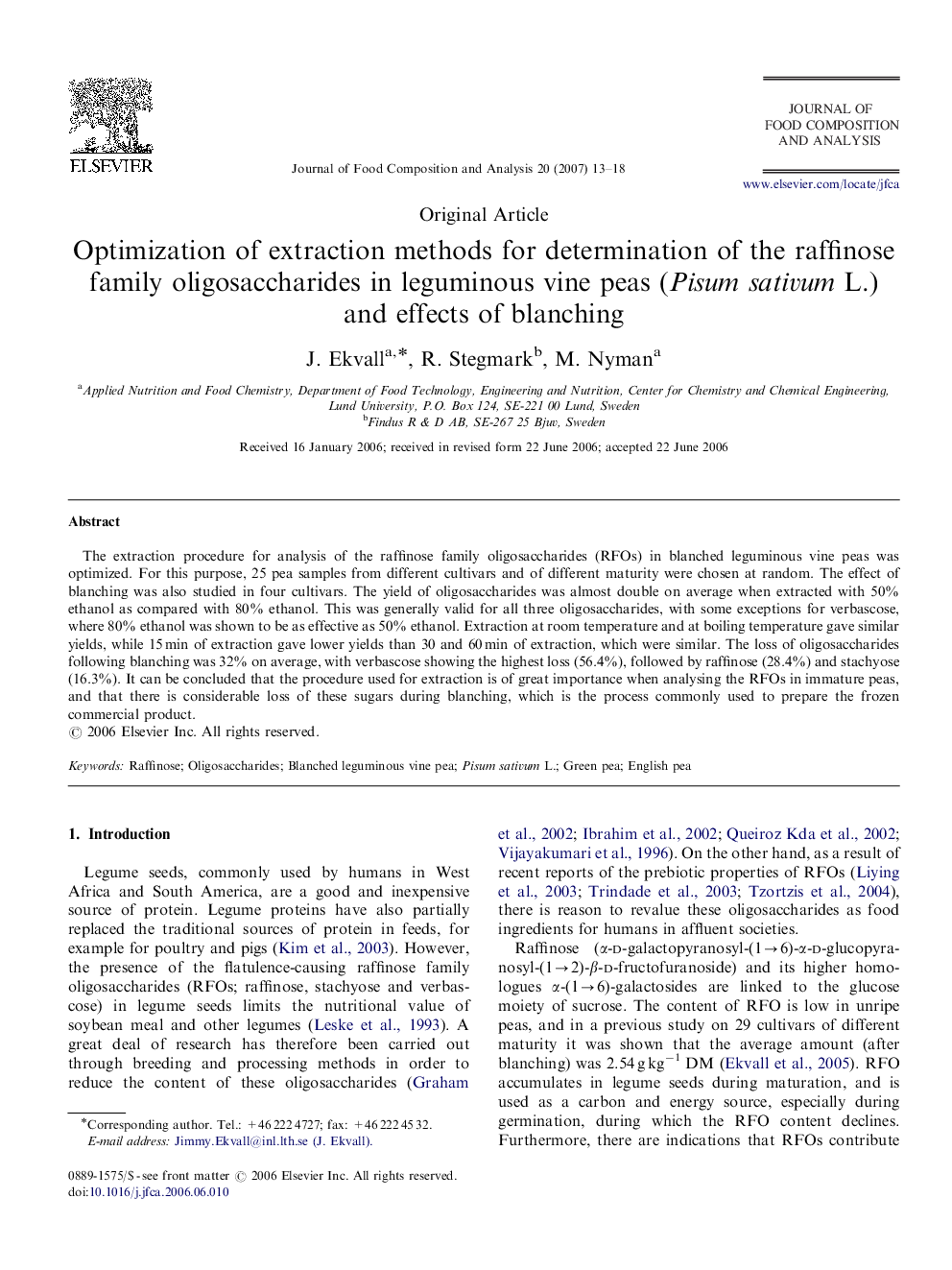| Article ID | Journal | Published Year | Pages | File Type |
|---|---|---|---|---|
| 1219386 | Journal of Food Composition and Analysis | 2007 | 6 Pages |
The extraction procedure for analysis of the raffinose family oligosaccharides (RFOs) in blanched leguminous vine peas was optimized. For this purpose, 25 pea samples from different cultivars and of different maturity were chosen at random. The effect of blanching was also studied in four cultivars. The yield of oligosaccharides was almost double on average when extracted with 50% ethanol as compared with 80% ethanol. This was generally valid for all three oligosaccharides, with some exceptions for verbascose, where 80% ethanol was shown to be as effective as 50% ethanol. Extraction at room temperature and at boiling temperature gave similar yields, while 15 min of extraction gave lower yields than 30 and 60 min of extraction, which were similar. The loss of oligosaccharides following blanching was 32% on average, with verbascose showing the highest loss (56.4%), followed by raffinose (28.4%) and stachyose (16.3%). It can be concluded that the procedure used for extraction is of great importance when analysing the RFOs in immature peas, and that there is considerable loss of these sugars during blanching, which is the process commonly used to prepare the frozen commercial product.
